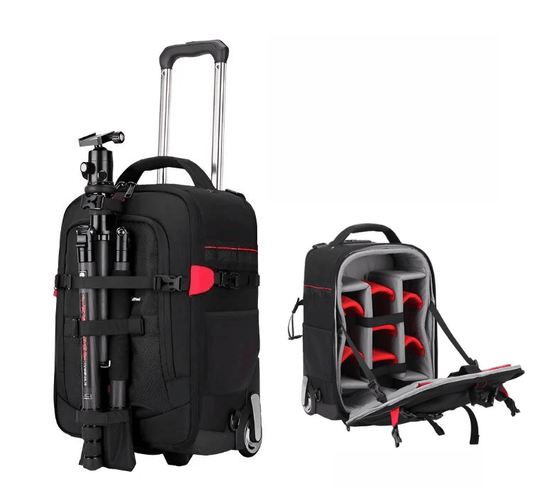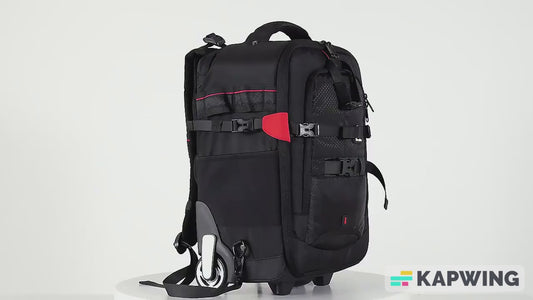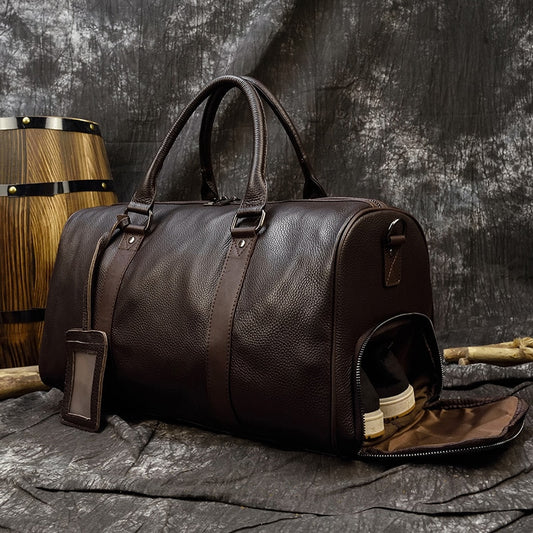Winter Camping in California's Sierra Nevada: A Comprehensive Guide
Introduction
The allure of pristine snow-covered landscapes and serene winter wilderness draws adventurers to the majestic Sierra Nevada Mountains of California. As the crisp air fills your lungs and the crunch of snow echoes beneath your feet, you're transported to a world of unparalleled beauty and tranquility. Winter camping in the Sierra Nevada offers a unique experience that challenges and rewards those willing to brave the elements.
This comprehensive guide delves into the intricacies of winter camping in the Sierra Nevada, exploring its historical significance, current trends, and the delicate balance between recreation and conservation. We'll uncover the challenges that await winter campers and provide expert insights on how to safely navigate this awe-inspiring wilderness.
Background and Context
Historical Significance of the Sierra Nevada Region
The Sierra Nevada, Spanish for "snowy mountain range," has played a pivotal role in California's history and development. From the indigenous peoples who first inhabited these lands to the gold rush era that shaped the state's destiny, the Sierra Nevada has been a constant backdrop to human endeavor and natural wonder.
John Muir, the renowned naturalist and conservationist, famously described the Sierra Nevada as the "Range of Light," captivated by its pristine beauty and diverse ecosystems. His advocacy led to the establishment of Yosemite National Park in 1890, setting a precedent for environmental conservation in the region.
Evolution of Winter Camping in the Area
Winter camping in the Sierra Nevada has evolved significantly over the decades. What was once the domain of hardy explorers and mountaineers has become increasingly accessible to a broader range of outdoor enthusiasts. Advancements in gear technology, improved weather forecasting, and a growing interest in winter recreation have all contributed to the rise in popularity of winter camping in the region.
Current Relevance: Recreational Value and Environmental Considerations
Today, winter camping in the Sierra Nevada stands at the intersection of recreational opportunity and environmental stewardship. As more people seek to experience the winter wilderness, the need for responsible practices and sustainable tourism becomes ever more critical.
The Sierra Nevada's snowpack is not just a playground for winter sports enthusiasts; it's a vital water source for California, providing about 30% of the state's water needs. This dual role as a recreational haven and crucial natural resource underscores the importance of understanding and preserving this unique environment.
Main Body
Key Concepts of Winter Camping in the Sierra Nevada
Unique Features of the Sierra Nevada Landscape
The Sierra Nevada boasts a diverse landscape that transforms into a winter wonderland each year. Towering peaks, frozen lakes, and snow-laden forests create a breathtaking backdrop for winter camping adventures. The region's varied topography offers opportunities for different camping experiences, from sheltered valleys to exposed alpine zones.
Challenges Specific to Winter Camping in the Region
Winter camping in the Sierra Nevada presents a unique set of challenges:
- Extreme weather conditions: Temperatures can plummet well below freezing, and sudden storms can arise with little warning.
- Limited daylight: Shorter winter days require careful planning and efficient use of daylight hours.
- Snow-covered terrain: Navigation becomes more challenging when familiar landmarks are obscured by snow.
- Avalanche risk: Certain areas of the Sierra Nevada are prone to avalanches, requiring vigilance and proper training.
Essential Skills and Knowledge Required
To safely enjoy winter camping in the Sierra Nevada, campers must possess or develop the following skills:
- Snow camping techniques: Including how to build snow shelters and properly set up tents on snow.
- Cold weather survival skills: Understanding hypothermia prevention and treatment is crucial.
- Navigation in snow-covered terrain: Proficiency with map, compass, and GPS devices is essential.
- Avalanche awareness and rescue techniques: Basic knowledge can be lifesaving in avalanche-prone areas.
- Leave No Trace principles: Practicing responsible camping to minimize environmental impact.
Latest Statistics and Trends
Snowpack Levels and Variability
Recent data provides insight into the Sierra Nevada's snowpack conditions:
- As of April 1, 2024, the snowpack in the Sierra Nevada was 110% of average, a significant change from the previous year's record high of 232% of normal snowpack.
- This variability highlights the unpredictable nature of the Sierra Nevada's winter conditions, as noted by hydrologist Noah Molotch: "The thing about the Sierras is there's no such thing as typical."
Visitor Statistics for Winter Camping
While specific visitor statistics for winter camping are not readily available, the overall trend shows an increase in winter recreation activities in the Sierra Nevada. National Parks in the region, such as Yosemite, have reported growing interest in winter visitation, including camping.
Climate Change Impact Projections
Climate change is expected to have significant impacts on the Sierra Nevada:
- Snowpacks below 6,000 feet elevation are projected to be eradicated.
- Overall snowpack across the range is expected to be reduced by more than 60%.
- These changes will lead to alterations in soil moisture, river flows, and stresses on flora and fauna.
Expert Opinions and Industry Insights
Hydrologist Noah Molotch on Sierra Nevada Snowpack Variability
"The thing about the Sierras is there's no such thing as typical."
Noah Molotch, Hydrologist at INSTAAR and NASA's Jet Propulsion Laboratory
Noah Molotch emphasizes the highly variable nature of the Sierra Nevada's snowpack. His statement underscores the need for winter campers to be prepared for a wide range of conditions.
Environmental Experts on Climate Change Effects
Environmental experts warn of the far-reaching consequences of climate change on the Sierra Nevada ecosystem. The projected reduction in snowpack will not only affect winter recreation but also have profound implications for California's water supply and the region's biodiversity.
Park Rangers' Perspectives on Winter Camping Safety
Park rangers stress the importance of proper preparation and safety measures for winter camping. They advise campers to:
- Always check weather forecasts and trail conditions before setting out.
- Inform someone of your planned route and expected return date.
- Carry appropriate emergency gear, including a communication device.
- Be prepared to turn back if conditions become unsafe.
Case Study: Successful Winter Camping in the Sierra Nevada
Group's Experience at Puente Palo
A recent winter camping expedition in the Sierra Nevada provides valuable insights into successful strategies for tackling the challenges of snow camping. A group of experienced winter campers set out to camp in the snow-clad mountains around Puente Palo in the Sierra Nevada. Their successful trip highlighted several key factors:
- Thorough planning and risk assessment before the trip.
- Continuous monitoring of weather conditions throughout their stay.
- Careful selection of camp location, considering wind direction and natural barriers.
- Innovative use of snow for campsite construction and tent stability.
Key Learnings and Best Practices
The group's experience reinforced several best practices for winter camping:
- Conduct a comprehensive risk assessment, including weather and snow conditions.
- Choose camp locations wisely, using natural features for protection.
- Be prepared to adapt plans based on changing conditions.
- Maintain a positive attitude and team spirit in challenging situations.
Innovative Techniques Employed
The campers utilized several innovative techniques to enhance their winter camping experience:
- Filling carrier bags with snow for guying out tents, providing extra stability.
- Using trekking poles buried in the snow as anchor points for guy lines.
- Creating snow walls to provide additional wind protection for tents.
- Implementing efficient systems for melting snow for drinking water.
Current Trends and Future Projections
Increasing Popularity of Winter Outdoor Activities
Winter outdoor activities, including camping, are experiencing a surge in popularity. This trend is driven by several factors:
- Growing interest in year-round outdoor recreation.
- Improved accessibility of winter gear and equipment.
- Increased awareness of the mental and physical health benefits of outdoor activities.
- Social media influence showcasing winter wilderness experiences.
Technological Advancements in Winter Camping Gear
The winter camping gear industry continues to innovate, producing equipment that enhances safety and comfort in extreme conditions:
- Lightweight, high-insulation sleeping bags and pads.
- Advanced layering systems for clothing that provide better moisture management.
- Portable, efficient stoves designed for cold weather operation.
- Improved tent designs that withstand heavy snow loads and high winds.
Projected Changes in Sierra Nevada Ecosystems Due to Climate Change
Climate change is expected to have significant impacts on the Sierra Nevada ecosystems:
- Shift in vegetation zones, with tree lines moving to higher elevations.
- Changes in wildlife habitat and migration patterns.
- Increased risk of wildfires due to drier conditions.
- Alterations in water availability and timing of snowmelt.
These changes will likely affect winter camping experiences in the coming decades, potentially altering accessible areas and optimal camping seasons.
Impact Analysis
Economic Impact on Local Communities
Winter camping and related activities contribute significantly to local economies in the Sierra Nevada region:
- Increased tourism during traditionally slower winter months.
- Support for local outdoor gear retailers and rental services.
- Employment opportunities in guide services and hospitality industries.
- Potential for year-round economic stability in mountain communities.
Environmental Impact of Winter Camping
While winter camping can have minimal impact when done responsibly, increased visitation raises concerns:
- Potential disturbance of wildlife in their winter habitats.
- Risk of vegetation damage in areas with thin snow cover.
- Challenges in waste management in frozen conditions.
- Possible degradation of popular camping areas due to overuse.
Influence on Outdoor Recreation Industry
The growing popularity of winter camping in the Sierra Nevada influences the broader outdoor recreation industry:
- Driving innovation in cold-weather gear and equipment.
- Expanding winter-specific outdoor education and guide services.
- Increasing demand for winter wilderness first aid and safety courses.
- Shaping marketing strategies to highlight winter outdoor experiences.
Comparison with Alternative Winter Camping Destinations
Yosemite National Park
Yosemite National Park offers a classic winter camping experience in the Sierra Nevada:
- Four campgrounds open year-round, providing accessibility for winter campers.
- Stunning views of iconic landmarks like Half Dome and El Capitan draped in snow.
- Opportunities for winter activities such as cross-country skiing and snowshoeing.
- Well-maintained facilities and ranger-led programs even in winter months.
Mammoth Lakes
Mammoth Lakes provides a different winter camping experience:
- Known for its lakeside mountain views and extensive winter sports options.
- Nearby trails offer excellent opportunities for exploration and backcountry camping.
- More developed area with amenities like hot springs for post-camping relaxation.
- Popular destination for both beginner and experienced winter adventurers.
Desolation Wilderness
Desolation Wilderness presents a more remote and rugged winter camping option:
- Vast wilderness area with fewer amenities compared to Yosemite or Mammoth Lakes.
- Offers a true backcountry experience for those seeking solitude.
- Requires more advanced winter camping and navigation skills.
- Stunning alpine scenery with frozen lakes and snow-covered granite peaks.
Controversies and Debates
Environmental Protection vs. Recreational Development
The balance between preserving the natural environment and allowing for recreational activities remains a contentious issue in the Sierra Nevada:
- Historical context: The controversy surrounding Walt Disney's proposed ski resort at Mineral King in the 1960s led to significant changes in environmental law.
- Current debates focus on the appropriate level of development for winter recreation facilities.
- Conservationists argue for minimal impact , while some local communities advocate for economic development through tourism.
Climate Change Adaptation Strategies
As the effects of climate change become more apparent, debates arise over the best adaptation strategies:
- Some propose investing in artificial snow-making to maintain winter recreation opportunities.
- Others advocate for diversifying tourist activities to reduce dependence on winter sports.
- Discussions on water management and conservation intensify as snowpack levels become less predictable.
Balancing Tourism with Conservation Efforts
The influx of winter campers and tourists raises questions about sustainable tourism practices:
- How to educate visitors on responsible camping and minimize environmental impact.
- Implementing permit systems or quotas to manage visitor numbers in sensitive areas.
- Balancing the economic benefits of tourism with the need to protect fragile ecosystems.
How To: Planning a Winter Camping Trip in the Sierra Nevada
How to Plan a Winter Camping Trip in the Sierra Nevada
Researching and Selecting a Suitable Camping Location
- Consider your skill level and experience with winter camping.
- Research different areas within the Sierra Nevada that allow winter camping.
- Check park websites and visitor centers for up-to-date information on accessibility and conditions.
- Consider factors such as elevation, exposure to wind, and proximity to emergency services.
Obtaining Necessary Permits and Understanding Regulations
- Check the specific requirements for your chosen camping location.
- Obtain wilderness permits if required, often available online or at ranger stations.
- Familiarize yourself with fire regulations, which may be stricter in winter.
- Understand any special rules or guidelines for winter camping in your chosen area.
Planning Emergency Routes and Backup Plans
- Study topographic maps of your camping area and surrounding regions.
- Identify potential escape routes and nearest points of assistance.
- Plan alternative campsites in case your primary choice is unsuitable upon arrival.
- Prepare a detailed itinerary and share it with a trusted contact.
Packing Appropriate Gear for Extreme Weather Conditions
Essential gear for winter camping in the Sierra Nevada includes:
- Four-season tent with a sturdy rainfly and snow stakes.
- Winter-rated sleeping bag (0°F or lower) and insulated sleeping pad.
- Layered clothing system including base layers, insulating layers, and waterproof outer layers.
- Winter boots, gaiters, and multiple pairs of warm socks.
- Insulated water bottles and a winter-specific camping stove.
- Avalanche safety gear if camping in avalanche-prone areas.
- Navigation tools including map, compass, and GPS device with extra batteries.
- Emergency shelter and first aid kit.
Implementing Leave No Trace Principles in Winter Environments
- Plan ahead to minimize waste and pack out all trash.
- Camp on durable surfaces, ideally on snow rather than exposed vegetation.
- Properly dispose of human waste – pack it out or use designated areas if available.
- Respect wildlife by maintaining a safe distance and storing food securely.
- Be mindful of your impact on snow-covered vegetation when setting up camp.
FAQ Section
What are the best months for winter camping in the Sierra Nevada?
The prime winter camping season in the Sierra Nevada typically runs from December through March, with peak snow conditions usually occurring in February. However, conditions can vary greatly depending on the specific location and elevation. It's essential to check current conditions and forecasts before planning your trip.
How do I protect my water from freezing during winter camping?
To prevent water from freezing:
- Use insulated water bottles or containers.
- Keep water bottles inside your sleeping bag at night.
- Carry water in an inside pocket of your jacket during the day.
- Consider using wide-mouth bottles, as they're less likely to freeze shut.
- If possible, use a vacuum-insulated bottle for hot drinks.
Are there guided winter camping tours available in the Sierra Nevada?
Yes, several outfitters and guide services offer guided winter camping experiences in the Sierra Nevada. These can range from beginner-friendly introductions to advanced backcountry expeditions. Some popular options include:
- Yosemite Mountaineering School and Guide Service
- Sierra Mountain Center
- Alpine Skills International
Always verify the credentials and safety records of any guide service before booking.
What wildlife precautions should I take when winter camping in this region?
While many animals are less active in winter, it's still important to practice wildlife safety:
- Store food and scented items in bear-resistant containers or hang them properly.
- Keep a clean camp to avoid attracting animals.
- Be aware of your surroundings and watch for signs of wildlife activity.
- Make noise while hiking to avoid surprising animals.
- Learn to identify tracks of common Sierra Nevada wildlife.
How can I minimize my environmental impact while winter camping?
To minimize your impact:
- Follow Leave No Trace principles rigorously.
- Camp on snow or durable surfaces to protect underlying vegetation.
- Use established trails and campsites when possible.
- Pack out all waste, including human waste if required by local regulations.
- Avoid disturbing wildlife, especially animals conserving energy for winter survival.
- Use a camp stove instead of campfires where permitted and appropriate.
Challenges and Solutions
Challenge: Extreme Weather Conditions
Winter in the Sierra Nevada can bring severe weather, including heavy snowfall, high winds, and sub-zero temperatures.
Solution:
- Invest in high-quality, four-season camping gear.
- Continuously monitor weather forecasts and be prepared to alter plans if conditions worsen.
- Master layering techniques for clothing to regulate body temperature effectively.
- Learn and practice cold weather survival skills, including recognizing and treating hypothermia.
Challenge: Limited Daylight Hours
Short winter days can limit the time available for setting up camp and outdoor activities.
Solution:
- Plan your daily schedule carefully, starting early and setting up camp before sunset.
- Bring reliable lighting sources, including headlamps and lanterns with extra batteries.
- Prepare meals in advance to save time during the shorter daylight hours.
Challenge: Navigating in Snow-Covered Terrain
Snow-covered landscapes can obscure familiar landmarks and make navigation challenging.
Solution:
- Develop advanced navigation skills, including proficiency with map and compass.
- Use GPS devices with extra batteries, but don't rely solely on electronic navigation.
- Learn to identify natural landmarks that remain visible in winter.
- Practice navigation techniques in controlled environments before attempting challenging routes.
Ethical Considerations and Best Practices
Respecting Wildlife and Their Winter Habitats
Winter is a particularly vulnerable time for wildlife in the Sierra Nevada. Campers must take extra precautions to minimize their impact:
- Maintain a safe distance from all wildlife, especially those struggling to conserve energy during winter months.
- Avoid camping near known wildlife corridors or feeding areas.
- Store food and scented items properly to prevent attracting animals to your campsite.
- Learn to identify signs of wildlife presence and alter your route if necessary to avoid disturbance.
Proper Waste Management in Snow-Covered Environments
Managing waste in winter conditions presents unique challenges:
- Pack out all trash, including food scraps and biodegradable items that won't decompose in cold temperatures.
- Use designated restroom facilities when available. In backcountry areas, follow Leave No Trace principles for human waste disposal:
- Pack out human waste when possible, using approved waste bags.
- If burying waste, do so in deep snow away from water sources and campsites.
- Properly dispose of gray water from cooking and cleaning, straining out food particles and scattering water widely.
Supporting Local Communities and Economies Responsibly
Winter camping can provide valuable economic support to local communities:
- Purchase supplies and gear from local outfitters when possible.
- Consider hiring local guides or participating in educational programs offered by community organizations.
- Respect local customs and regulations, especially in areas near residential communities.
- Participate in local conservation efforts or volunteer programs when available.
Success Stories and Testimonials
Experienced Camper's Account of a Challenging Winter Expedition
"Our recent trek through the Desolation Wilderness pushed our skills to the limit. A sudden storm rolled in, reducing visibility to near zero. Thanks to our rigorous preparation and navigation skills, we were able to safely navigate to a sheltered area and set up camp. The experience reinforced the importance of always being prepared for the worst while hoping for the best in these majestic but unforgiving mountains."
John Muir, seasoned winter camper
Family's Memorable Winter Camping Adventure in Yosemite
"We were initially apprehensive about camping in the snow with our children, but the experience was truly magical. The park rangers provided excellent guidance, and we felt safe throughout our stay. Waking up to a fresh blanket of snow on Half Dome was a moment we'll never forget. It's opened up a whole new world of outdoor adventures for our family."
The Rodriguez family, first -time winter campers
Photographer's Journey Capturing Sierra Nevada's Winter Beauty
"Camping in the Sierra Nevada during winter has allowed me to capture some of the most breathtaking images of my career. The interplay of light and shadow on the snow-covered landscape is simply unparalleled. Despite the challenges of protecting my equipment from the cold and navigating icy terrain, the results have been more than worth it. Winter camping has given me access to vistas and moments that few get to experience."
Sarah Chen, award-winning landscape photographer
Tools, Equipment, and Resources
Essential Winter Camping Gear Checklist
-
Shelter:
- Four-season tent with snow stakes
- Winter-rated sleeping bag (0°F or lower)
- Insulated sleeping pad
- Emergency bivy sack
-
Clothing:
- Base layers (moisture-wicking)
- Insulating mid-layers (fleece or wool)
- Waterproof and breathable outer layers
- Insulated boots and gaiters
- Warm hat, gloves, and extra socks
-
Cooking and Hydration:
- Winter-specific camping stove and fuel
- Insulated water bottles and thermos
- Water purification system (suitable for freezing temperatures)
-
Navigation and Safety:
- Topographic map and compass
- GPS device with extra batteries
- Avalanche beacon, probe, and shovel (if in avalanche-prone areas)
- Emergency communication device (satellite phone or personal locator beacon)
-
Miscellaneous:
- Headlamp and extra batteries
- First aid kit with winter-specific items
- Fire starting materials
- Multi-tool and repair kit
- High-energy snacks and meals
Recommended Navigation Tools and Apps
-
Physical Tools:
- USGS Topographic Maps of the Sierra Nevada region
- Suunto MC-2G Global Compass
- Silva Ranger 2.0 Compass
-
Digital Tools:
- Gaia GPS App: Offers detailed topographic maps and offline navigation
- Avenza Maps: Allows you to download geo-referenced PDF maps
- CalTopo: Powerful mapping software for route planning and navigation
-
GPS Devices:
- Garmin GPSMAP 66i: Combines GPS navigation with satellite communication
- Garmin inReach Mini: Compact satellite communicator with basic navigation
Reliable Sources for Up-to-Date Weather and Trail Conditions
- Official Sources:
-
Online Resources:
- Sierra Nevada Avalanche Center: Provides daily avalanche forecasts
- OpenSnow: Detailed snow forecasts for the Sierra Nevada region
- Mountain Forecast: Specific weather forecasts for mountain peaks
-
Local Resources:
- Ranger stations in national parks and forests
- Local outdoor gear shops and guide services
- Sierra Nevada visitor centers
Conclusion
Winter camping in California's Sierra Nevada offers a unique and rewarding experience for those willing to brave the elements and embrace the challenges of the snow-covered wilderness. From the stunning vistas of Yosemite to the remote backcountry of Desolation Wilderness, the Sierra Nevada provides a diverse range of winter camping opportunities for both beginners and experienced adventurers.
Throughout this comprehensive guide, we've explored the key aspects of winter camping in this majestic mountain range, including:
- The historical significance and evolving trends in Sierra Nevada winter recreation
- Essential skills and knowledge required for safe and enjoyable winter camping
- Current challenges, including climate change impacts and environmental conservation efforts
- Practical tips for planning and executing a successful winter camping trip
- Ethical considerations and best practices for minimizing environmental impact
As we've seen, proper preparation is paramount when venturing into the winter wilderness. This includes not only having the right gear and skills but also a deep understanding of the environment and a commitment to responsible outdoor practices.
The Sierra Nevada's winter landscape is as fragile as it is beautiful. As campers, we have a responsibility to protect this unique ecosystem while enjoying its wonders. By following Leave No Trace principles, respecting wildlife, and supporting local communities, we can help ensure that future generations will also have the opportunity to experience the magic of winter in the Sierra Nevada.
Whether you're planning your first winter camping trip or looking to expand your cold-weather adventure skills, remember that the key to a successful and safe experience lies in thorough preparation, continuous learning, and a healthy respect for the power of nature.
As John Muir, the famous naturalist and "Father of the National Parks," once said, "The mountains are calling, and I must go." The Sierra Nevada in winter is indeed calling, offering a pristine wilderness experience that challenges the body and nourishes the soul. With the right preparation and mindset, you too can answer that call and create unforgettable memories in one of California's most spectacular natural settings.
So pack your gear, check the conditions, and set out to discover the serene beauty and exhilarating challenges of winter camping in the Sierra Nevada. The snow-capped peaks, frozen lakes, and silent forests await your responsible exploration.
Additional Resources
Official Sierra Nevada Park Websites
- Yosemite National Park - Winter
- Sequoia and Kings Canyon National Parks - Winter
- Sierra National Forest
- Inyo National Forest
Winter Camping Guidebooks and Online Courses
- "Winter Camping" by Stephen Gorman
- "The Winter Camping Handbook" by Stephen Stucker
- REI's Online Winter Camping Basics Course
- National Outdoor Leadership School (NOLS) Winter Skills Course
Local Outfitters and Guide Services
- Yosemite Mountaineering School and Guide Service
- Sierra Mountain Center
- Alpine Skills International
- Sierra Nevada Guides
These additional resources provide valuable information, training opportunities, and professional guidance for those looking to deepen their winter camping skills and knowledge of the Sierra Nevada region. Whether you're seeking expert-led adventures or aiming to enhance your self-guided experiences, these resources offer a wealth of information to support your winter camping journey in the Sierra Nevada.
Remember, the mountains will always be there. It's up to us to ensure we approach them with respect, preparation, and a commitment to preservation. Happy winter camping!































































